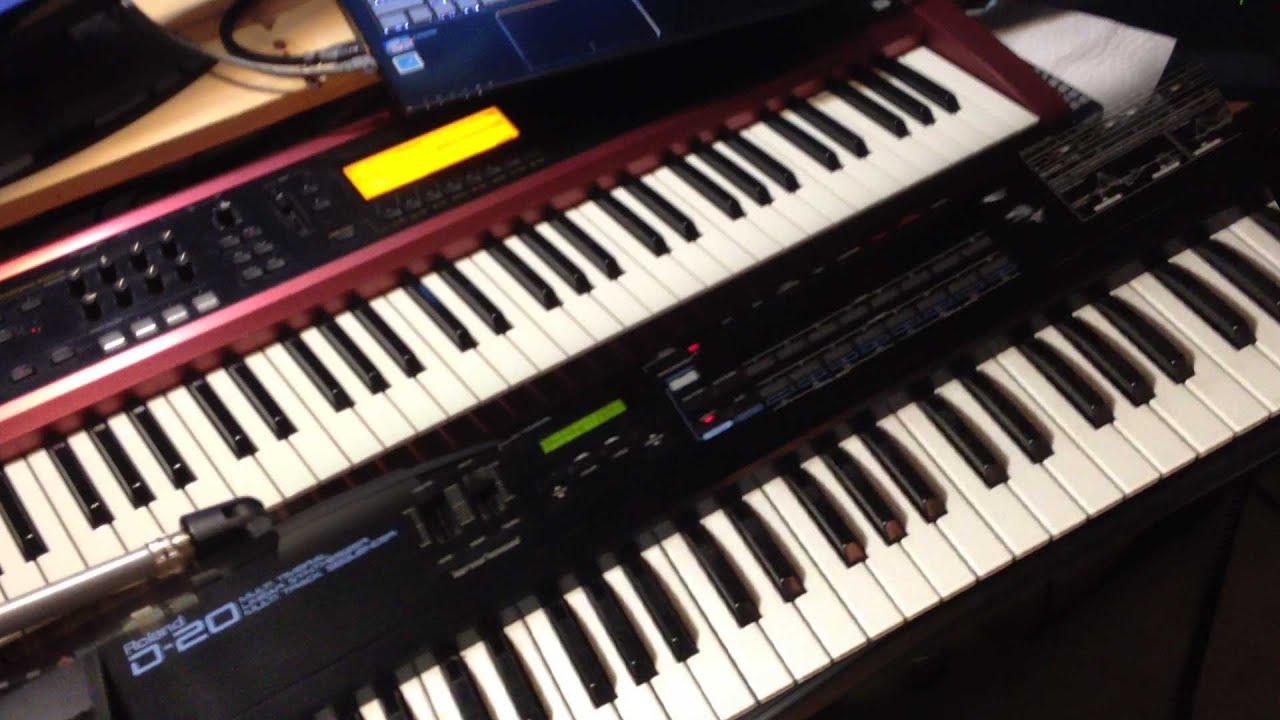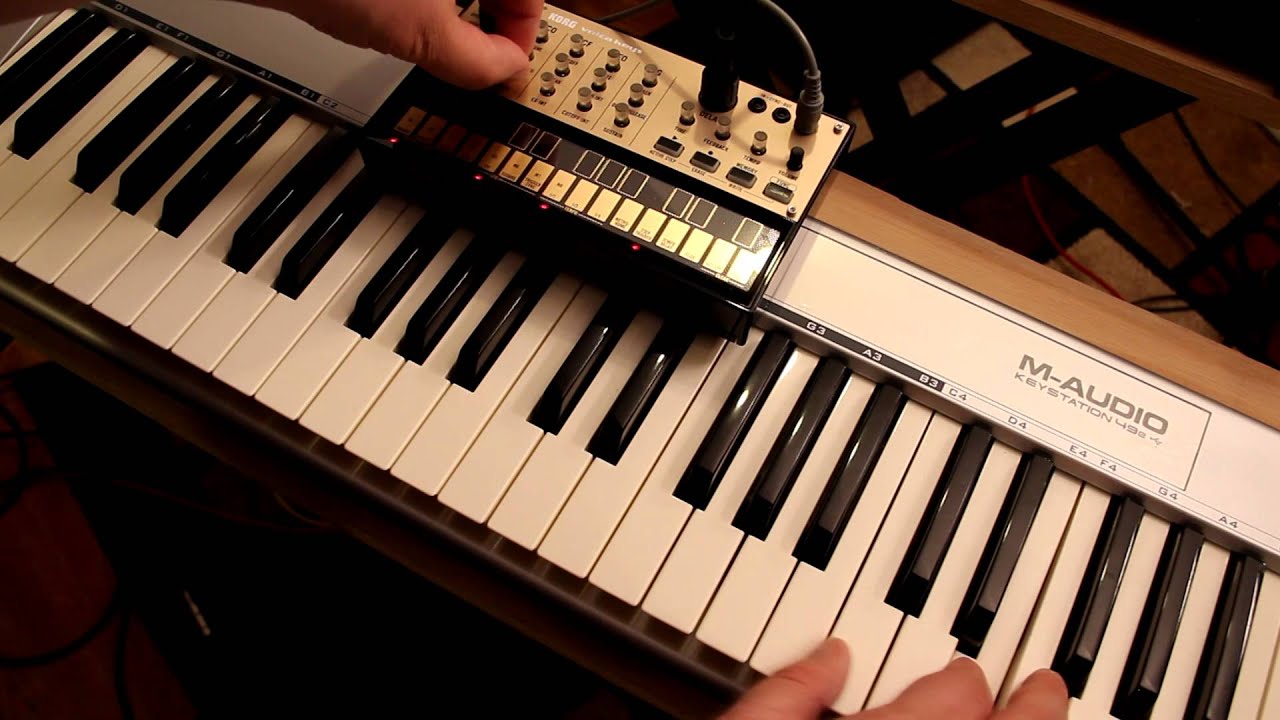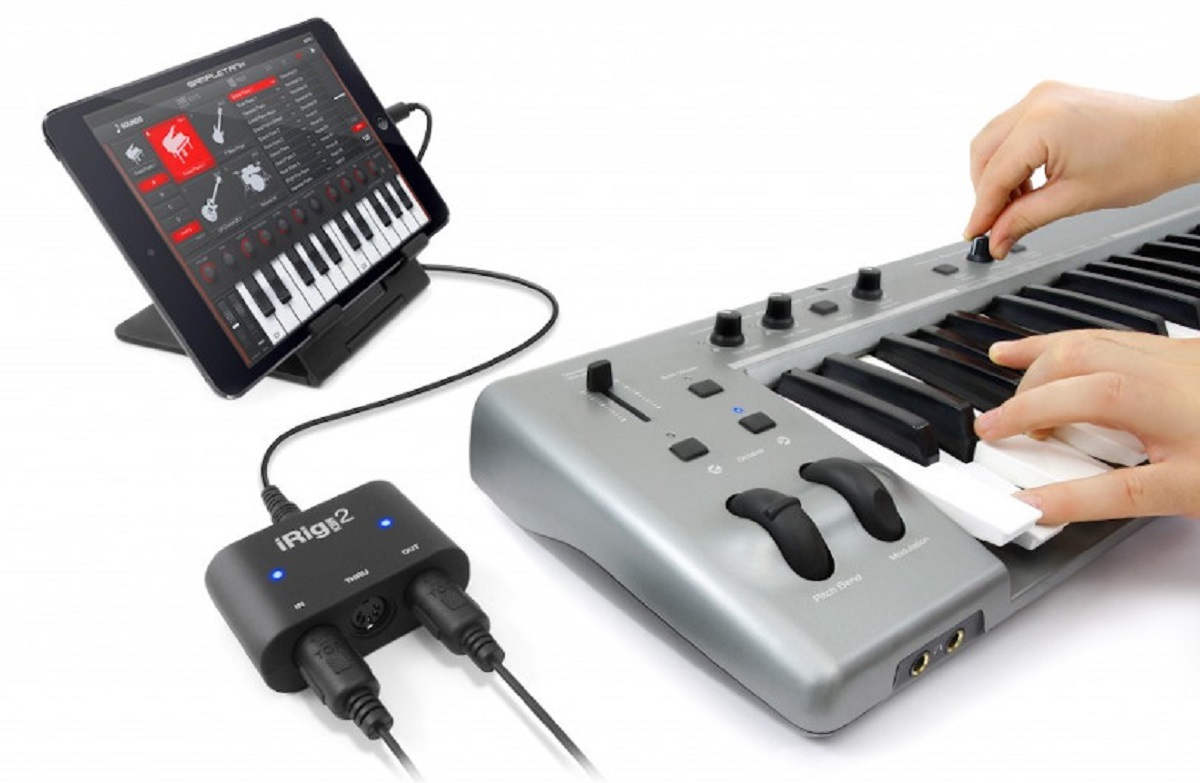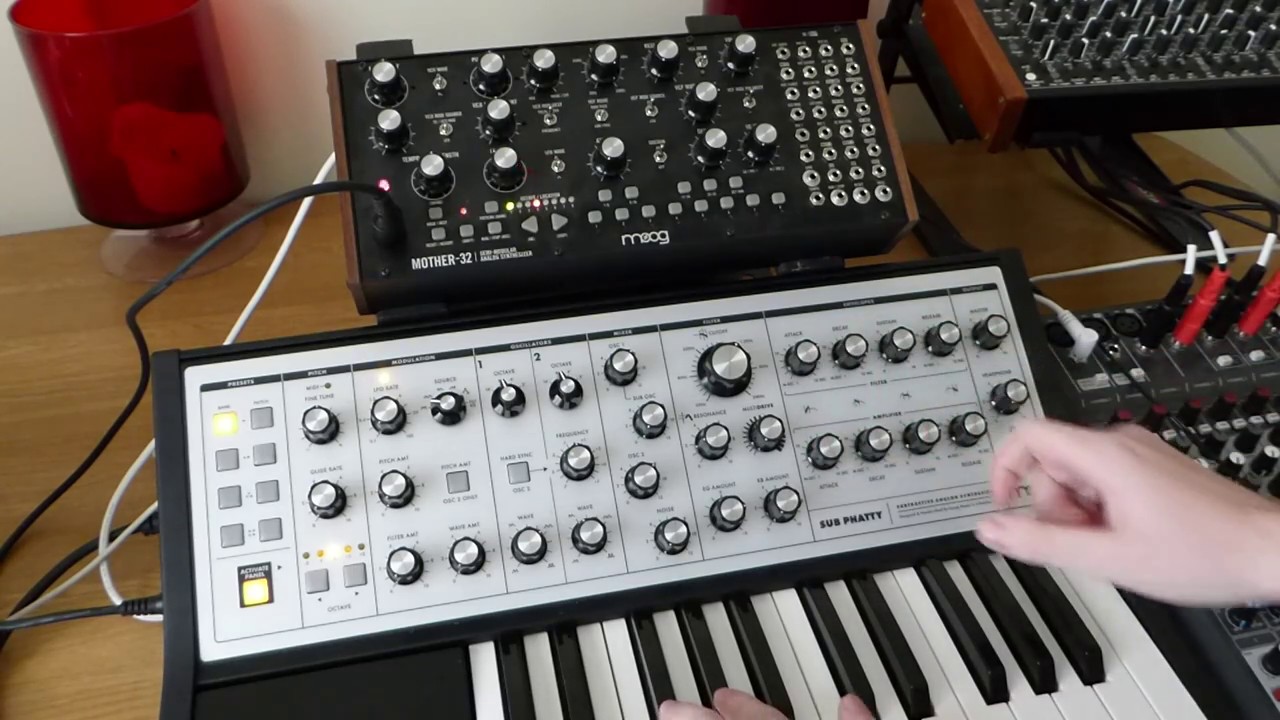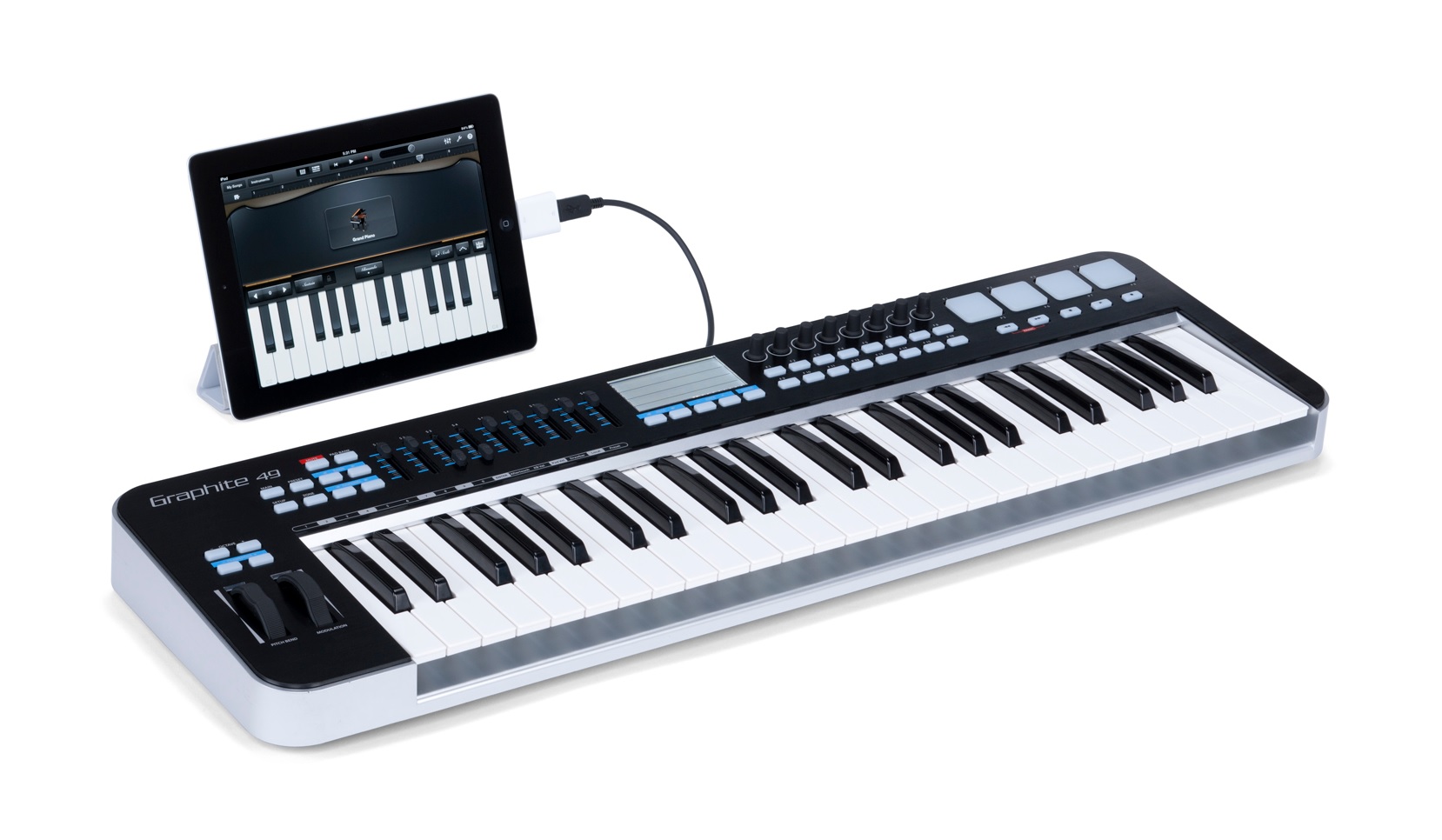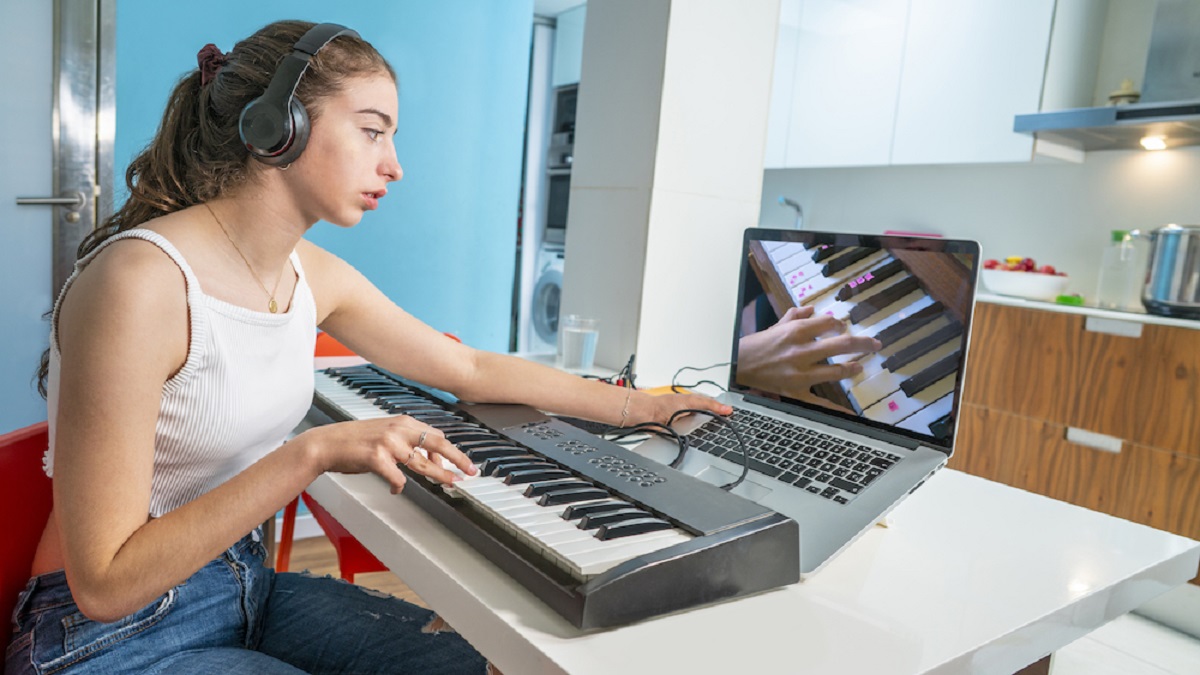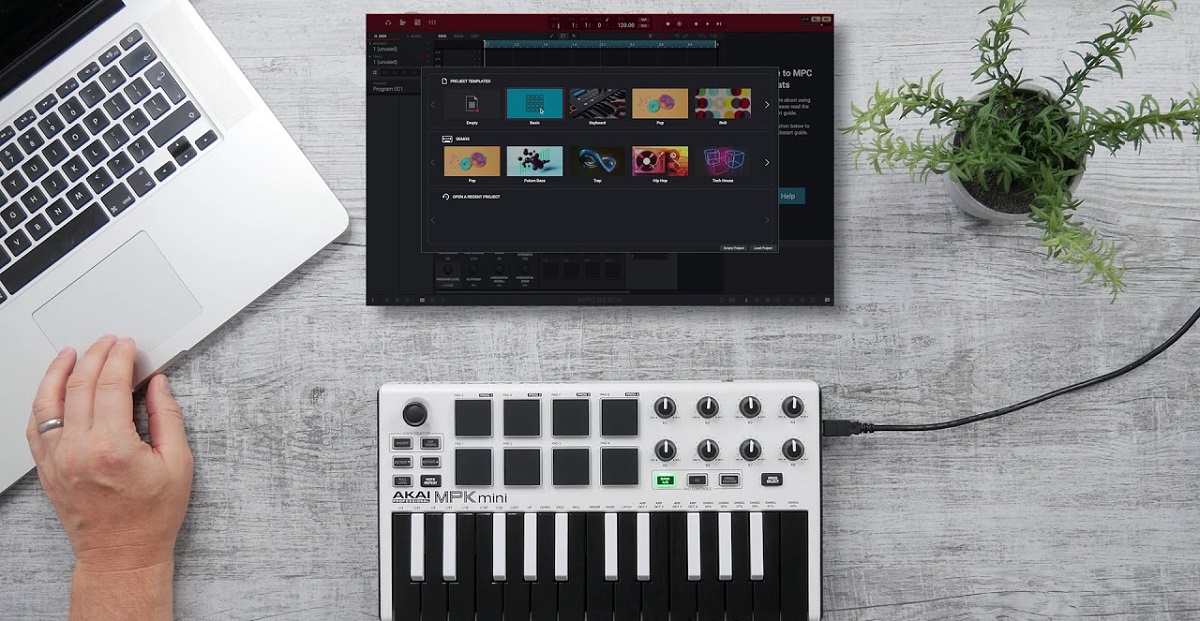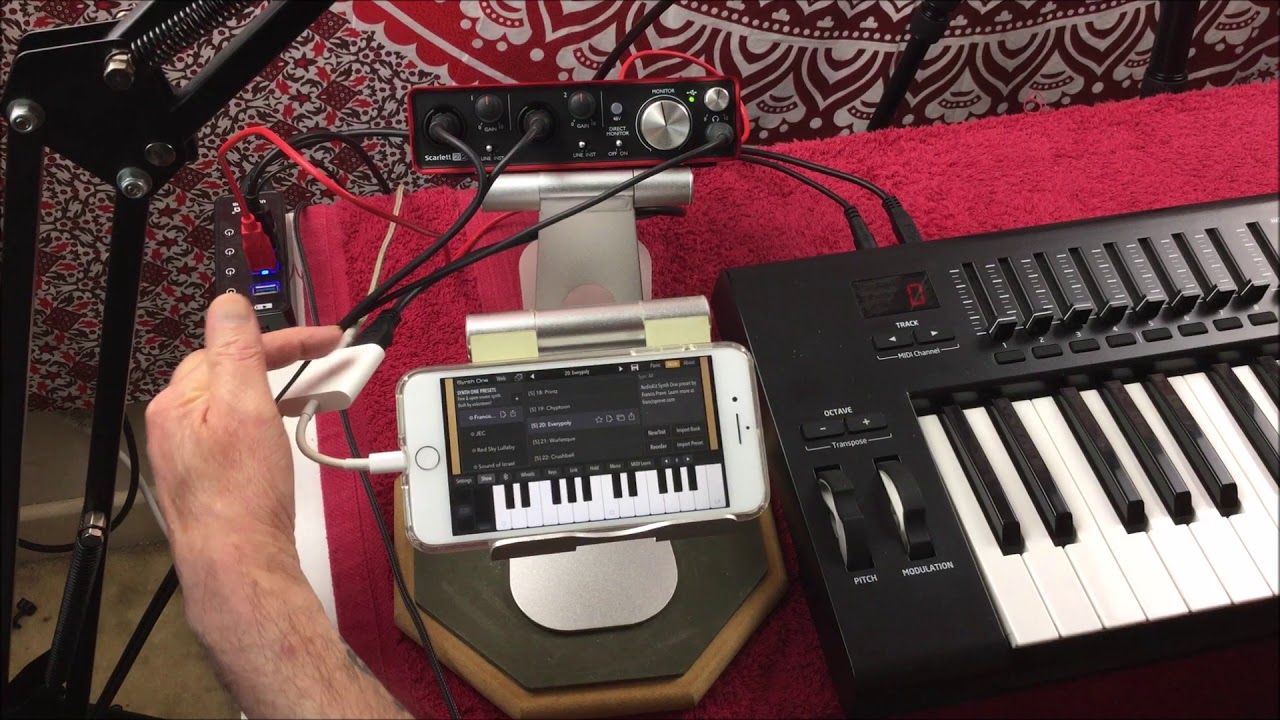Introduction
Playing two keyboards through one keyboard with a MIDI keyboard can open up a world of musical possibilities. Whether you're a solo performer looking to create a fuller sound or a producer seeking to streamline your workflow, this setup can be a game-changer. By leveraging the capabilities of a MIDI keyboard, you can control multiple keyboards simultaneously, allowing for a seamless and dynamic performance.
This guide will walk you through the process of setting up and configuring your MIDI keyboard to play two keyboards at once. We'll cover the essential equipment you'll need, the steps to connect your MIDI keyboard to two keyboards, and the configuration required to ensure everything works harmoniously. Additionally, we'll share some tips and tricks to help you make the most of this setup and elevate your musical experience.
Whether you're a seasoned musician or just starting on your musical journey, learning how to play two keyboards through one keyboard with a MIDI keyboard can expand your creative horizons. So, let's dive in and explore the exciting possibilities that await!
What You’ll Need
Before embarking on the journey of playing two keyboards through one keyboard with a MIDI keyboard, it’s essential to gather the necessary equipment. Here’s what you’ll need to get started:
- MIDI Keyboard: The core component of this setup is a MIDI keyboard with the capability to transmit MIDI data to external devices. Look for a MIDI keyboard with multiple MIDI output ports for connecting to the additional keyboards.
- Additional Keyboards: Depending on your preferences and musical requirements, you’ll need one or more additional keyboards to be controlled by the MIDI keyboard. These keyboards can vary in sound, functionality, and size, allowing you to create a diverse and layered musical performance.
- MIDI Cables: To establish connections between the MIDI keyboard and the additional keyboards, you’ll require MIDI cables. Ensure that you have the appropriate length of cables to reach all the devices comfortably.
- Power Supplies: If your additional keyboards require individual power sources, make sure you have the necessary power supplies to keep them operational during your performances or recording sessions.
- Sturdy Keyboard Stand: To accommodate both the MIDI keyboard and the additional keyboards, invest in a sturdy and adjustable keyboard stand that provides stability and flexibility for your setup.
- Audio Cables: Depending on the audio output options of your additional keyboards, you may need audio cables to connect them to a mixer, audio interface, or amplification system for sound reinforcement.
- Music Production Software (Optional): If you plan to integrate your MIDI keyboard setup with music production software on a computer, ensure that you have the necessary software and audio interface for seamless integration and recording capabilities.
By assembling these essential components, you’ll be well-prepared to embark on the exciting journey of playing two keyboards through one keyboard with a MIDI keyboard. The next step involves setting up your MIDI keyboard and establishing connections to bring this musical configuration to life.
Setting Up Your MIDI Keyboard
Before delving into the intricacies of playing two keyboards through one keyboard with a MIDI keyboard, it’s crucial to ensure that your MIDI keyboard is properly set up and ready to control multiple devices. Follow these steps to prepare your MIDI keyboard for this innovative configuration:
- Power Up Your MIDI Keyboard: Connect your MIDI keyboard to a power source and ensure that it’s powered up and ready for operation. Check the user manual for specific instructions related to powering on the device.
- Connect Your MIDI Keyboard to a Computer (Optional): If your MIDI keyboard offers USB connectivity and you intend to integrate it with music production software on a computer, connect the MIDI keyboard to your computer using a USB cable. Install any necessary drivers or software provided by the manufacturer to enable communication between the MIDI keyboard and your computer.
- Explore MIDI Output Options: Familiarize yourself with the MIDI output options available on your MIDI keyboard. Identify the MIDI output ports that will be used to connect to the additional keyboards. Some MIDI keyboards feature multiple MIDI output ports, allowing for simultaneous control of multiple devices.
- Configure MIDI Channel Settings: Access the MIDI channel settings on your MIDI keyboard. Determine how you want the MIDI keyboard to transmit MIDI data to the connected keyboards. You can assign different MIDI channels to each connected keyboard, enabling independent control and flexibility in your performances.
- Test MIDI Communication: To ensure that your MIDI keyboard is effectively transmitting MIDI data, perform a test by connecting it to a single additional keyboard. Play notes on the MIDI keyboard and verify that the connected keyboard responds accordingly. This initial test will help you confirm the functionality of the MIDI communication.
By following these steps, you’ll establish a solid foundation for your MIDI keyboard setup, paving the way for seamless communication and control over multiple keyboards. Once your MIDI keyboard is set up, you can proceed to the next phase of connecting it to two keyboards and configuring the system for a harmonious musical experience.
Connecting Your MIDI Keyboard to Two Keyboards
With your MIDI keyboard set up and ready, the next step is to establish connections to control two keyboards simultaneously. Follow these steps to connect your MIDI keyboard to two keyboards:
- Identify MIDI Output Ports: Examine the MIDI output ports on your MIDI keyboard and the MIDI input ports on the additional keyboards. Ensure that you have the necessary MIDI cables to establish connections between the devices.
- Connect the First Keyboard: Using a MIDI cable, connect the MIDI output port of your MIDI keyboard to the MIDI input port of the first additional keyboard. Ensure a secure and snug connection to facilitate reliable MIDI communication between the devices.
- Connect the Second Keyboard: If you have a second additional keyboard, repeat the process by connecting the MIDI output port of your MIDI keyboard to the MIDI input port of the second keyboard using another MIDI cable. This will establish a direct link between your MIDI keyboard and the second keyboard.
- Verify MIDI Signal Flow: Once the connections are in place, power on all the devices and verify the MIDI signal flow. Play notes on your MIDI keyboard and observe how both connected keyboards respond to the MIDI data being transmitted. This step ensures that the MIDI communication is functioning as intended.
- Positioning and Cable Management: Arrange the keyboards and cables in a manner that allows for comfortable access during performances or practice sessions. Consider using cable organizers or Velcro straps to manage the cables and prevent tangling or accidental disconnection during use.
By completing these steps, you’ll have successfully connected your MIDI keyboard to two keyboards, establishing a cohesive system that enables you to control and play multiple keyboards through your MIDI keyboard. The next phase involves configuring your MIDI keyboard to ensure seamless and synchronized control over the connected keyboards, enhancing your musical capabilities and creative expression.
Configuring Your MIDI Keyboard
Configuring your MIDI keyboard is a crucial step in ensuring that it effectively controls and interacts with the connected keyboards. By customizing the MIDI settings and parameters, you can optimize the performance and versatility of your MIDI keyboard setup. Follow these essential configuration steps to enhance your musical experience:
- Assign MIDI Channels: Access the MIDI channel settings on your MIDI keyboard and assign distinct MIDI channels to each connected keyboard. This enables independent control and allows you to play different sounds on each keyboard simultaneously.
- Enable MIDI Keyboard Splitting: If your MIDI keyboard supports keyboard splitting functionality, configure it to divide the keyboard into distinct zones, each assigned to control a specific connected keyboard. This feature enhances your ability to play different parts or instruments with precision.
- Configure MIDI Transmit Settings: Explore the MIDI transmit settings on your MIDI keyboard to specify the type of MIDI data to be transmitted, such as note data, control change messages, and program change commands. Adjust these settings according to your performance requirements and the capabilities of the connected keyboards.
- Program MIDI Controller Assignments: If your MIDI keyboard features assignable knobs, sliders, or buttons, program them to control parameters on the connected keyboards, such as volume, modulation, pitch, or effects. This customization adds expressive control and dynamic manipulation to your performances.
- Save Custom Configurations: Once you’ve fine-tuned the MIDI settings and configurations, consider saving them as custom presets or setups on your MIDI keyboard. This allows you to quickly recall specific configurations for different musical compositions or performance scenarios, streamlining your workflow.
By meticulously configuring your MIDI keyboard, you’ll unlock its full potential as a versatile controller for multiple keyboards, empowering you to create intricate and captivating musical arrangements. The tailored configurations will align the MIDI keyboard with your artistic vision, providing a seamless and expressive platform for your musical endeavors.
Playing Two Keyboards with Your MIDI Keyboard
Now that your MIDI keyboard and additional keyboards are interconnected and configured, it’s time to explore the exciting possibilities of playing two keyboards simultaneously using your MIDI keyboard. Here are the key steps to effectively play two keyboards with your MIDI keyboard:
- Explore Layered Sound Combinations: Utilize the capabilities of your MIDI keyboard to layer sounds from both connected keyboards, creating rich and harmonious textures. Experiment with combining different instrument sounds, such as piano and strings, to craft immersive and multi-dimensional musical arrangements.
- Utilize Keyboard Splitting Techniques: Take advantage of keyboard splitting features on your MIDI keyboard to designate specific sections of the keyboard to control each connected keyboard independently. This technique allows you to play distinct parts or instruments with precision, adding depth to your performances.
- Dynamic Performance Control: Leverage the dynamic control features of your MIDI keyboard, such as velocity-sensitive keys and aftertouch, to infuse expressive nuances into your performances on both keyboards. Adjusting the touch sensitivity and articulation can enhance the musical dynamics and emotional impact of your playing.
- Real-Time Parameter Manipulation: Use the programmable controls on your MIDI keyboard to manipulate parameters on the connected keyboards in real time. Adjusting parameters such as filter cutoff, resonance, and effects adds a layer of spontaneity and creativity to your performances, allowing for dynamic sonic exploration.
- Seamless Integration with Music Software: If you’ve integrated your MIDI keyboard setup with music production software, leverage the seamless integration to record and manipulate performances. Capture MIDI data from both keyboards and explore post-production possibilities to refine your musical creations.
By embracing these techniques, you’ll harness the full potential of your MIDI keyboard as a versatile controller for playing two keyboards simultaneously. The ability to craft intricate and immersive musical experiences through this setup opens the door to boundless creative expression and captivating performances.
Tips and Tricks
As you embark on your journey of playing two keyboards through one keyboard with a MIDI keyboard, consider the following tips and tricks to optimize your setup and enhance your musical explorations:
- Experiment with Sound Combinations: Explore diverse combinations of sounds from the connected keyboards to create unique and captivating sonic landscapes. Layering contrasting or complementary instrument sounds can add depth and richness to your performances.
- Practice Keyboard Splitting Techniques: Dedicate time to mastering keyboard splitting functionality on your MIDI keyboard, allowing you to seamlessly switch between controlling different keyboards or playing distinct musical parts with precision.
- Customize MIDI Controller Assignments: Tailor the assignable controls on your MIDI keyboard to suit your playing style and performance preferences. Assign parameters that resonate with your musical expression, empowering you to shape the sound in real time.
- Explore Performance Scenarios: Consider the diverse scenarios in which you can leverage your MIDI keyboard setup, from live performances and studio recordings to collaborative jam sessions. Adapt your playing techniques to suit each unique setting.
- Integrate Pedal Control: Incorporate MIDI foot pedals to expand your expressive capabilities, allowing for hands-free control over sustain, modulation, and other parameters, freeing up your hands to focus on playing the keyboards.
- Utilize Performance Templates: Create and save performance templates on your MIDI keyboard, pre-configured for specific musical genres or ensemble arrangements. This streamlines the setup process for different musical contexts.
- Embrace Dynamic Playing Techniques: Experiment with varying degrees of touch sensitivity and articulation on your MIDI keyboard to infuse your performances with expressive dynamics, conveying emotion and musical storytelling.
- Collaborate and Share Knowledge: Engage with fellow musicians and enthusiasts to exchange insights, tips, and creative approaches to playing multiple keyboards through a MIDI keyboard, fostering a vibrant community of musical exploration.
By incorporating these tips and tricks into your musical journey, you’ll enrich your experience of playing two keyboards through one keyboard with a MIDI keyboard, unlocking new avenues for artistic expression and performance innovation.
Conclusion
Exploring the realm of playing two keyboards through one keyboard with a MIDI keyboard unveils a realm of boundless creativity and musical possibilities. By harnessing the capabilities of your MIDI keyboard to control multiple keyboards simultaneously, you can craft immersive and dynamic performances that transcend traditional musical boundaries.
Throughout this guide, you’ve learned the essential steps to set up, connect, and configure your MIDI keyboard for this innovative musical configuration. From identifying the necessary equipment to configuring MIDI channel settings and exploring advanced playing techniques, you’ve gained insights into the intricacies of this setup.
As you embark on your musical journey with this setup, remember to embrace experimentation, continuous learning, and collaborative exploration. The tips and tricks provided offer valuable guidance for optimizing your MIDI keyboard setup and expanding your expressive capabilities.
Whether you’re a solo performer, a studio musician, or a music producer, the ability to play two keyboards through one keyboard with a MIDI keyboard empowers you to create captivating compositions, intricate arrangements, and engaging live performances. The seamless integration of multiple keyboards under the control of a single MIDI keyboard opens the door to a world of sonic exploration and artistic innovation.
As you apply the knowledge and techniques from this guide to your musical endeavors, embrace the unique opportunities for self-expression and sonic craftsmanship that this setup affords. Your journey of playing two keyboards through one keyboard with a MIDI keyboard is a testament to the limitless creativity and ingenuity that define the art of music.
So, immerse yourself in the boundless realm of musical exploration, and let the harmonious convergence of multiple keyboards under the guidance of your MIDI keyboard be the catalyst for your transformative and captivating musical odyssey.







